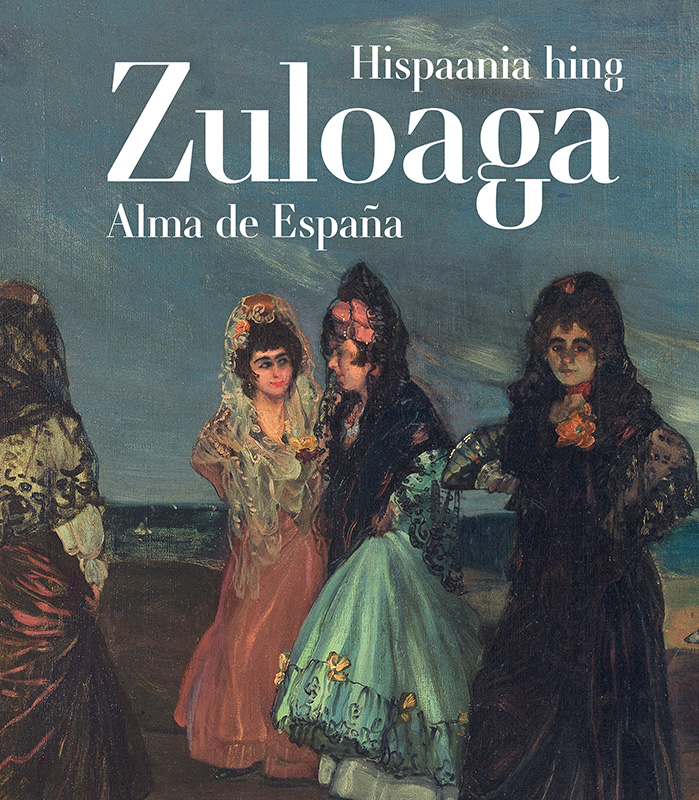Ignacio Zuloaga (1870–1945) holds a special place in Spanish art. His works reflect the painful search for identity and the political and social breakthroughs of the beginning of the 20th century in Spain, while preserving and developing the traditions of the Spanish school of painting. Zuloaga, who came from a Basque artistic dynasty, studied art in the independent private academies of Paris, but he considered the old Spanish masters to be his main role models and their influence is apparent in many of his works. After long years spent in Paris, where he belonged to innovative artistic circles and was friends with Paul Gauguin, Henri de Toulouse-Lautrec, Maurice Denis, August Rodin, Maxime Dethomas and many other figures of art, music and literature, and a successful international career (Zuloaga’s exhibitions took place in Paris, London, Venice, Dresden, Rome, New York, Mexico City, Buenos Aires, Moscow, St Petersburg etc.), he returned to Spain, dedicating himself to depicting the traditional way of life in his new home region of Castile.
Although Zuloaga’s widespread fame and great success were guaranteed by numerous parade portraits of influential members of the contemporary elite in Spain and in both North and South America, the present exhibition focuses on the themes that the artist himself considered important. The mentality and essential values of Spain after the horrors of the Civil War and its search for identity were shown in Zuloaga’s portrait series of Spanish luminaries, where the model’s character and intellectual world are depicted with equal power through their expressions and poses, as well as in the landscapes that surround them. Portraits of Manuel de Falla, one of the most influential Spanish composers of the 20th century, the philosopher and writer Azorin and the legendary bull fighter Belmonte capture not only the appearance of actual people but also the mentality of a whole era. The traditions that Zuloaga tried to depict in his paintings are mainly associated with bull fighting and flamenco: toreadors and flamenco dancers appear often in his oeuvre.
Landscape paintings, which Zuloaga called his self-portraits, were exceedingly important to him for preserving and interpreting the heritage of Spain. They show the characteristics of Castile: the joint impact of desert yellow and faded dark greens with a brightly sunlit sky or gloomy and dramatic thunderclouds. Landscapes are merged with the people who inhabit this land: travellers, paupers and peasants. The most virtuous example of this is Women in Sepúlveda.
The role of Ignacio Zuloaga in Spanish culture is not limited to his own artistic output. He was one of the most active heritage protectors and a dedicated art collector. The core of his collection consisted of the works of old Spanish masters and numerous examples of Medieval art, including icons, sculptures and other objects. He used this collection to found a private museum that was open to all visitors in his home town of Zumaia. Part of this collection is also included in this exhibition. Besides preserving Spanish traditions, Zuloaga also emphasised the study and popularisation of the Spanish school of painting. He became an influential art expert, especially when it came to the oeuvre of Francisco Goya and El Greco. Many of his attributions are still used to determine the works of Goya. These artists were also part of Zuloaga’s collection, but today they are in various private and museum collections.
The exhibition is organised in collaboration with the Ignacio Zuloaga Museum in Pedraza, which was founded by the artist’s granddaughter, Maria Rosa Suárez Zuloaga, and is located in the Pedraza Castle, where the artist and his family lived beginning at the end of the 1920s. The works of the exhibition have been loaned by the Reina Sofia Museum, Bilbao Fine Arts Museum, Zuloaga Museum in Segovia and numerous Spanish private collections.
The exhibition has been organised in collaboration with the Ignacio Zuloaga Museum and the Embassy of Spain.
Curators: Carlos Alonso Pérez-Fajardo (Ignacio Zuloaga Museum, Pedraza) and Aleksandra Murre
Gallery name: Mikkeli muuseum
Address: Weizenbergi 28, Tallinn
Opening hours: Tue, Thu-Sun 10:00 - 18:00, Wed 10:00 - 20:00
Open: 10.04.2021 - 05.09.2021







